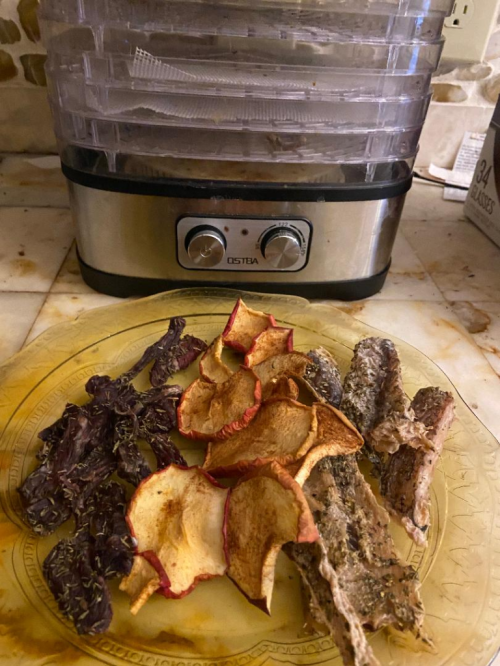Category: Dog Nutrition
Good Veggie List (Modern Dog Magazine)

Fruits and Veggies that are safe for dogs to eat
By Gayle Pruitt
Good Veggies
Acorn Squash (all Winter Squash + Pumpkin)
Alfalfa Sprouts (small amount)
Asparagus
Beets
Bell Pepper (all colors)
Broccoli
Carrots
Cabbage
Collards
Cauliflower
Green Beans (lightly cooked)
Kale
Lettuces (not iceberg hard to digest)
Spinach
Sweet potatoes
Summer Squash (yellow & Zucchini)
Good fruits
Melons
Coconut
Cranberries
Berries (fresh and frozen): Blueberries, blackberries, strawberries Raspberries —
Bananas
Apple (not seeds)
For awesome, healthy recipes your dog will love incorporating many of the above fruits and veggies, check out the terrific cookbook Dog-Gone Good Cuisine by Gayle Pruitt
Rainbow Chard Stems for Dogs….and humans?
Why in the world would I feed chard & chard stems to dogs? Well for many reasons.
- You don’t have to throw the stems away (saves on trash)
- They taste great lightly sautéed or for dogs you may puree them.
- The chard itself is wonderful for humans & dogs and helps with blood pressure, boosts immune system, and it is packed with nutrients, yet low in calories, high in iron, potassium, magnesium and vitamins K, C and some A. Chard has antioxidants, including quercetin, kaempferol, rutin, and vitexin
- The biggie with Swiss chard STEMS are they are loaded with glutamine an amino acid that is usually found in animal proteins. However, Swiss chard stems has a goodly supply. Great for gut health!
Give Chard a try. We like Rainbow Chard at the Pruitt house, we are all about color.
Chard is on lists for high oxalates. Humans & dogs with a tendency for kidney stones, please check with your and your dog’s healthcare provider before eating.

Obesity in Dogs (Part 1)….Diet and Exercise
by Robert Berger, M.S., MVSc., Ph.D and Al Plechner, DVM
Similar to many people, our canine companions are also showing significant increases in overall obesity. There are many private and public agencies that are concerned about the health issues caused by obesity in people, but there has been very little concern about the same type of obesity that occurs in our beloved pets- both in cats as well as dogs- but this article discusses only dogs at this venture.
Our pet’s obesity can develop from many things; improper diet, little or no exercise, genetics, metabolic disease (i.e., hypothyroid disease ), but mostly, their obesity comes from their owner (s)…you are their caretaker and this is your responsibility…to blame here ….may be just simple “over-feeding”.
“What type of food should I feed, or not feed my dog?”
That is the basic question when it comes to the diet.
Dry foods, which include kibbles, biscuits, and pet cookies, usually contain three times the amount of carbohydrate content that canned foods contain! Excess carbohydrates cause not only a potential rise in blood sugar, which can lead to hyperglycemia and even diabetes, (very bad for dogs), but the sugar not used for energy will be converted to and stored as body fat…..which can lead to obesity! In any case, hyperglycemia, diabetes and obesity can definitely reduce your dog’s lifespan and overall health!
You should always be aware of how much your dog is panting during and after exercising. Dogs don’t sweat like we humans do, as their cooling-off mechanism is regulated through panting nd through their paw pads in order to remove heat from their bodies and lower their body-core temperature.
When you are walking or running with your dog, if you observe that he/she is panting excessively or heavily, it is time to stop and go inside where it is cooler (or warmer in some cases, depending on the climate). You have to allow your dog to be able to regulate his or her core temperature…..this is most vital.
All of the above is extremely important if your dog is obese or even just overweight. Extreme and heavy panting puts a lot of strain and pressure on the heart, lungs, the kidneys, and numerous organs and structures especially in an obese or overweight dog. In addition, it puts a dog with weight issues and/or girth problems at even greater risk of heart attack or stroke than that of a leaner dog.

